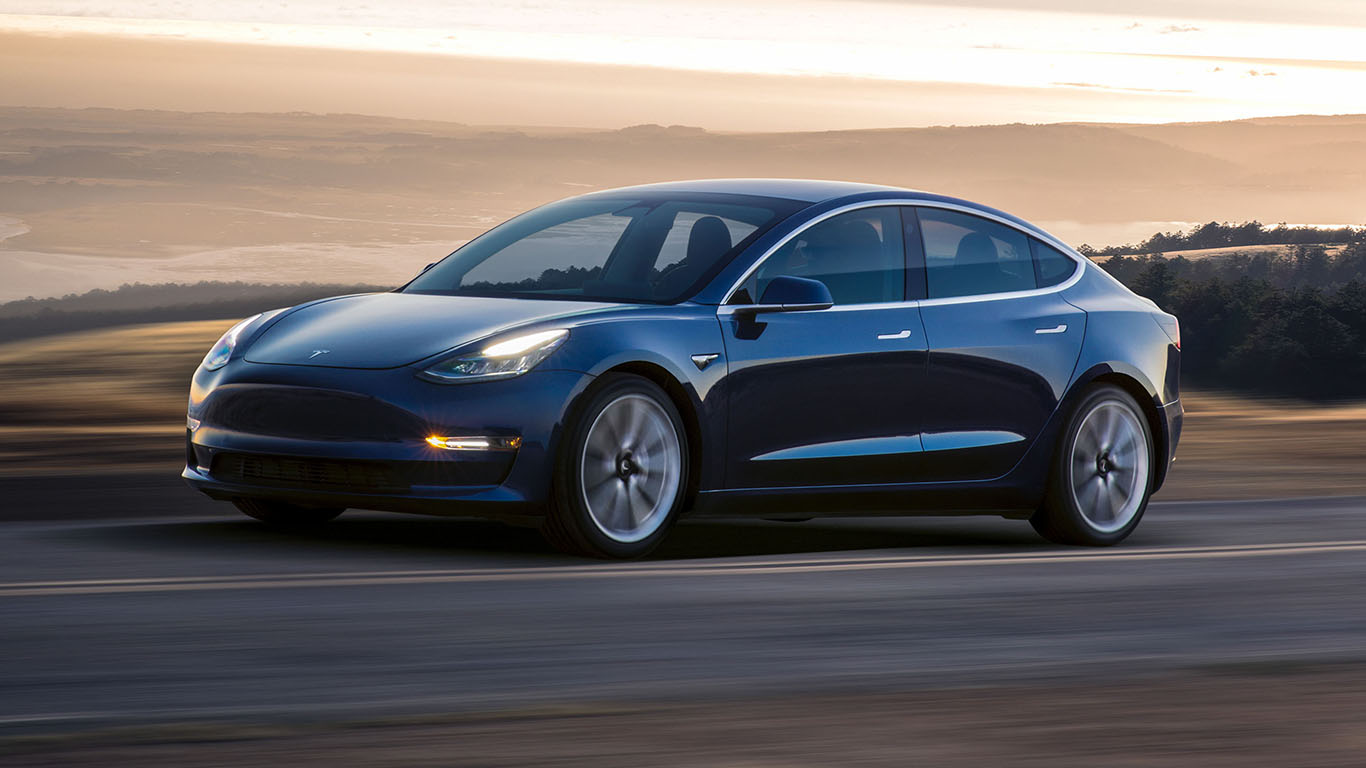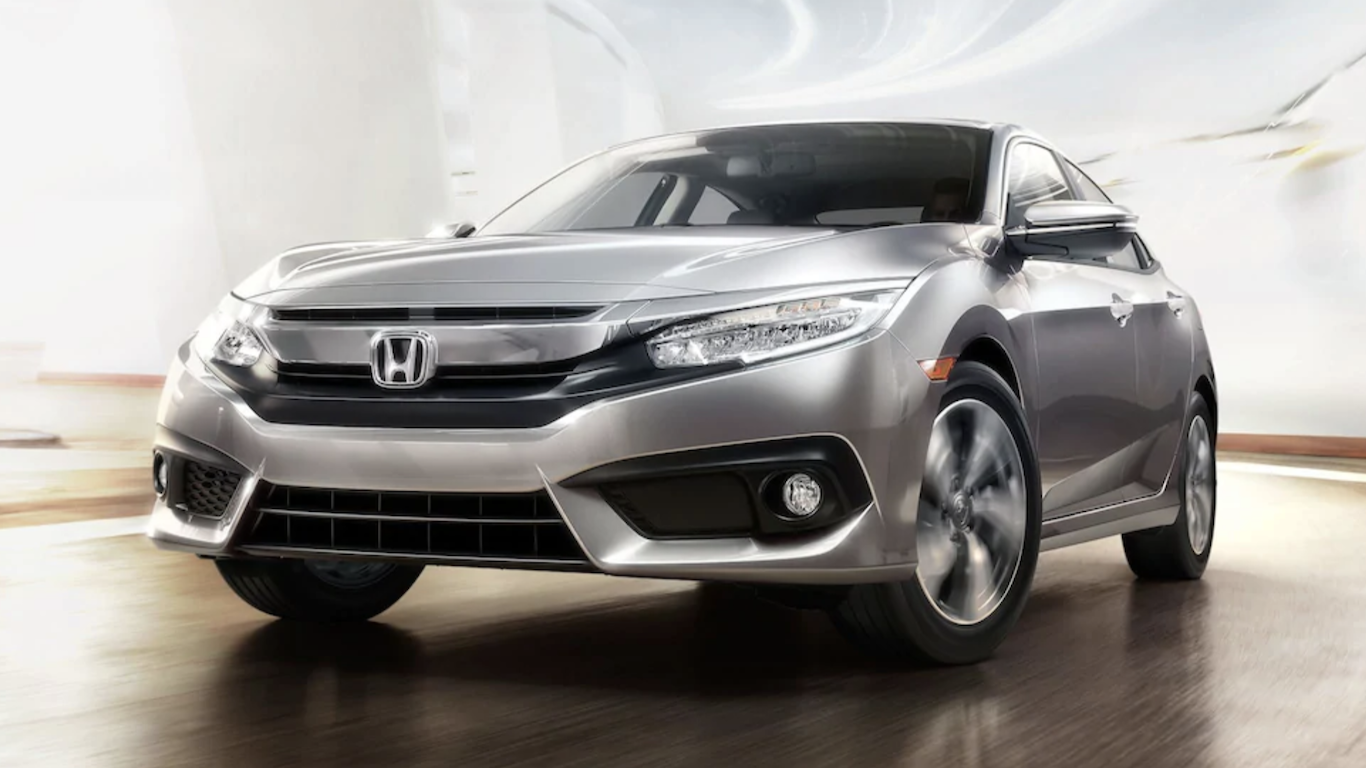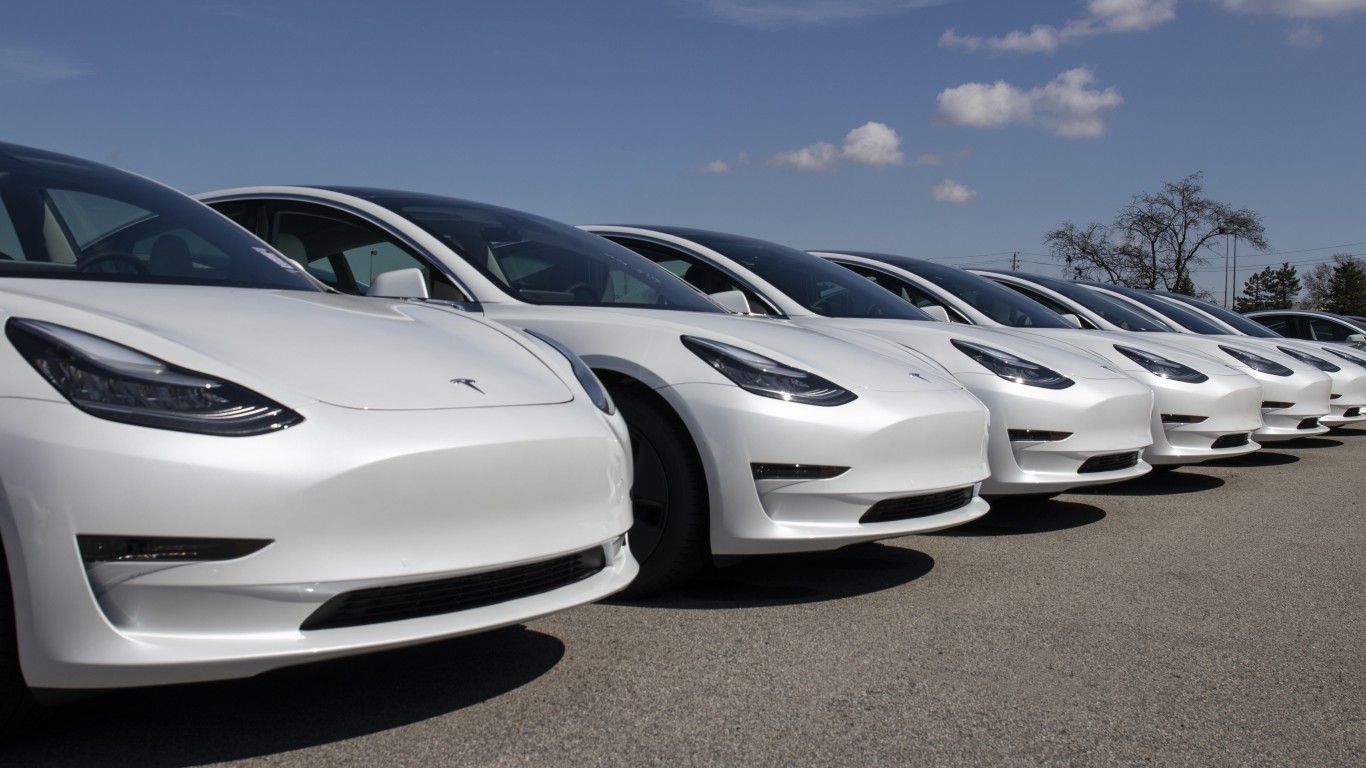
Now that U.S. automakers have reported their final sales numbers for 2018, it’s time to take a look at how sales of electric vehicles closed the year. Overall, 360,273 electrified vehicles were sold last year in the United States and 1.71 million were sold globally. The U.S. total is 80% higher than the 2017 total, and the global total is 40% higher year over year.
According to a report from analysts at JPMorgan, by 2025 all-electric vehicles (EVs) and hybrid electric vehicles (HEVs) will account for 40% of all new vehicle sales globally. That’s a 7.7% market share of a forecast 8.4 million sales. In 2016, about 1% of global vehicle sales were EVs and plug-in HEVs (PHEVs).
China will lead the switch, far outstripping any other country in the adoption of electric vehicles. JPMorgan expects the Middle Kingdom to account for 59% of global electric car sales by 2020 before dipping to 55% in 2025. Small EVs with small batteries that sell for around $6,250 make electric cars both affordable and popular in China.
Battery costs have dropped nearly 80% since 2010 to around $210 to $230 per kilowatt-hour. To be competitive with an internal combustion engine, battery costs have to fall to about $100 per kilowatt-hour, according to JPMorgan’s analysis.
Speaking of internal combustion engines, global auto industry analysts at Jato Dynamics told the Financial Times last week that peak combustion engine sales likely peaked in 2018. Partly that’s the result of slowing new car sales projected for this year and beyond. Moody’s is projecting global car sales volume of 96.6 million units in 2019, up 1.2% over 2018 sales. If EV sales rise by 1.6%, as forecast by analysts at AlixPartners, the EV sales will be taking market share from the internal combustion engine.
Norway has proved that the adoption of EVs gets a boost from government help. In 2018, nearly a third of all new cars sold in Norway were EVs. Adding in PHEVs, nearly half of all sales were down to electric cars. Norway exempts most battery-powered cars from taxes and offers both free parking and free charging stations for EVs.
In the United States, both Tesla and General Motors, maker of the popular Chevy Bolt, have reached the limit of their eligibility for a $7,500 federal tax credit on sales of their cars. The credit was halved on January 1 and will be halved again in six months. By January 2020, the incentive will be gone, although Tesla is cutting prices on its cars by $2,000 to help offset the loss of the federal credit.
Here’s a list of the 10 best-selling electric vehicles in the United States compiled by Inside EVs.
Tesla Model 3
This is Tesla’s entry-level EV, priced starting at around $35,000. The company sold more than 25,000 in December and will reach production of around 300,000 in 2019, if it maintains that pace.
Toyota Prius Prime
The Prius Prime is a PHEV first introduced to U.S. consumers in 2016, and it has sold more than 50,000 units since then.
Tesla Model X
The Model X is Tesla’s crossover, introduced in 2015, and has sold 66,530 units since its introduction.
Tesla Model S
First introduced in 2012, the high-end (starting price around $78,000) vehicle has sold more than 144,000 units through 2018.
Chevrolet Volt
The PHEV Chevy Volt first went on sale in the United States in 2009 and has sold some 151,000 units through the end of 2018.
Honda Clarity PHEV
The Clarity PHEV first went on sale in late 2017 and sold just 903 units in that year. Honda also offers a Clarity EV model.
Chevrolet Bolt
The Bolt EV hit U.S. showrooms in late 2016 and has sold a total of nearly 42,000 units since its introduction.
Nissan Leaf
The Leaf EV has sold nearly 130,000 units since 2011 and is a direct competitor to the Chevy Bolt.
BMW 530e
This BMW 5-series PHEV went on sale in the United States in the spring of 2017 and has sold nearly 12,450 units since then.
Ford Fusion Energi
The Fusion Energi is a PHEV that addresses the same market as the Chevy Volt, Bolt and Tesla Model 3. Since its introduction in 2013, the Fusion Energi has sold more than 60,000 units.
| 2018 U.S. EV SALES | December | Total |
|---|---|---|
| Tesla Model 3* | 25,250 | 139,782 |
| Toyota Prius Prime | 2,759 | 27,595 |
| Tesla Model X* | 4,100 | 26,100 |
| Tesla Model S* | 3,250 | 25,745 |
| Honda Clarity PHEV* | 2,770 | 18,602 |
| Chevrolet Volt* | 1,058 | 18,306 |
| Chevrolet Bolt EV* | 1,412 | 18,019 |
| Nissan LEAF | 1,667 | 14,715 |
| BMW 530e* | 1,363 | 8,664 |
| Ford Fusion Energi | 790 | 8,074 |
| 2018 U.S. Sales Totals | 49,900 | 361,307 |
| 2017 U.S. Sales Totals | 26,107 | 199,826 |
| 2018 Worldwide Sales* | 1,713,957 |
*Estimated sales numbers, reconciled on monthly or quarterly totals. Courtesy of Inside EVs.
In the United States, one carmaker dominates — Tesla. The California-based carmaker sold 191,627 vehicles last year, more than half of all U.S. electric car sales.
100 Million Americans Are Missing This Crucial Retirement Tool
The thought of burdening your family with a financial disaster is most Americans’ nightmare. However, recent studies show that over 100 million Americans still don’t have proper life insurance in the event they pass away.
Life insurance can bring peace of mind – ensuring your loved ones are safeguarded against unforeseen expenses and debts. With premiums often lower than expected and a variety of plans tailored to different life stages and health conditions, securing a policy is more accessible than ever.
A quick, no-obligation quote can provide valuable insight into what’s available and what might best suit your family’s needs. Life insurance is a simple step you can take today to help secure peace of mind for your loved ones tomorrow.
Click here to learn how to get a quote in just a few minutes.
Thank you for reading! Have some feedback for us?
Contact the 24/7 Wall St. editorial team.
 24/7 Wall St.
24/7 Wall St.


